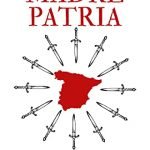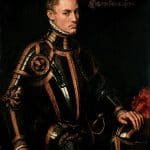
Contents
Where is this cowboy band from? Where are you going?
With what intentions? They will soon reach their destination. They are determined to do one of theirs.

Street with the riders already on foot, ready to take a break after the journey
In the Wild West everything is alike!
Texas? New Mexico? Arizona? Another place?

Many cowboys and travelers in carriages have already reached their destination,
These cowboys go like pergrins to
the Hermitage “El Rocio” in the South of Spain
Does it remind you of a place you have visited?

Arrival of cowboys and travelers in horse carriages for greater safety in the journey of utensils, food, the elderly, women and children
Comment it! Many do not know!

After a long journey through the countryside, a group of horsemen reach their destination
The Cowboys are not from the U.S,
Remember they were the Vaqueros from Spain
The Cowboys are not originally from the U.S. Spain (Europe) exported its Horse Culture. When the Anglo-Americans came to Texas, the cowboys were already there.
Don’t let them tell you stories. For Hollywood’s Wild West propaganda, we associate them with something typical of the U.S. Cowboys are considered to be very American.
Another Anglo-American appropriation?. Even if you change the name and advertise it as your own, its story is there, and it’s Spanish. The Cowboys have always existed, of origin is Hispanic, and more specifically from Spain.
They came to Texas from New Spain, through Mexico and were originally from southern Spain
The custom, their clothes and even their equipment, were already used in Mexico and before they arrived from Spain.
Hispanic was the American cowboy or VAQUEROS
Even the custom of moving herds of cattle great distances, although considered from the United States, had its origin in Hispanic Texas.
The Rodeo in Texas is also of Hispanic origin.
Another Anglo-American tha considers it so from the U.S, but it also came from Mexico.
The first were organized by the Spanish. And everything that surrounds him, the cowboys, their clothes and even the cattle, arrived earlier from Spain
In this interesting VIDEO, shows the culture of the horse and the training of a young Andalusian, to face his first bull on horseback.
In this video you can see the initiation of a young Spaniard in the world of the horse and the bull. Report on the horse and the marshes in Spain. Family learning about horse culture.
Rodeo, SPANISH WORD
The origin is so evident that even in the U.S.A., this ranch activity is still referred to by the Spanish word Rodeo, which evidences its historical origin.
The famous Mexican or Californian cowboys, who even came to Hawaii, and their tradition continues there. Cowboys are known as Paniolos (from Spanish, since they did not know how to pronounce it)
The territories of Texas were Hispanic during and colonized from Mexico, and inherited their customs. To go to the U.S. They continued to carry out traditional activities that were carried out mainly in the current states of California, Arizona, New Mexico and especially Texas.
The Charros come from Salamanca, and soon became popular in New Spain.The Rodeo, their harness and their clothes are Hispanic something that we forget or sometimes, we do not even know
Look at the Video.Texas o Spain?
North America’s First Livestock Move
Gálvez and the 10,000 head of cattle from Texas to feed his army of 7,500 Hispanic soldiers who fought in the Revolutionary War in North America.
Gálvez was very aware that his soldiers had to be fed very well. These were mostly Spanish, French, African-American, Mexican, Cuban, and Anglo-American etc.
And he knew where the best food was. During his first assignment in New Spain, he had been doing control work and pacifying the Apaches. At this time he was acquainted with the enormous ranches of Texas, and was impressed by the thousands of head of cattle that grazed freely. After the approval of a special permit, the cattle were transferred to Louisiana.
In charge of its protection, the guards of the border were chosen, the respected soldiers on horseback, called Dragons or Soldiers of Cuera.
Read more:
Learn more about the history of cowboys.
Video of Youtube: Training a young man
Training a young man in horse mastery
This video answers many questions. And its beauty is evident. Millennial tradition. Enjoy the magic of cinema!
Curiously, the answer will be given by a beautiful Italian video, whose images are worth a thousand words. When we can see the beauty of nature, countryside, horses, tradition, value, music, fun, training, challenge, etc.
A video that increases your interest as it passes. even if I understand few words.
>Worth! Travel to the Wild West!
English:
Video; Did you know that the origin of cowboy culture comes from Spain?
The First Cowboys of the Open Range
Spanish:
Horse culture continues
The culture of the horse and the bull is still alive in Spain. The traditional riding schools, the care of the bulls, the pilgrimages on horseback, the traditional cowboy clothes etc.



